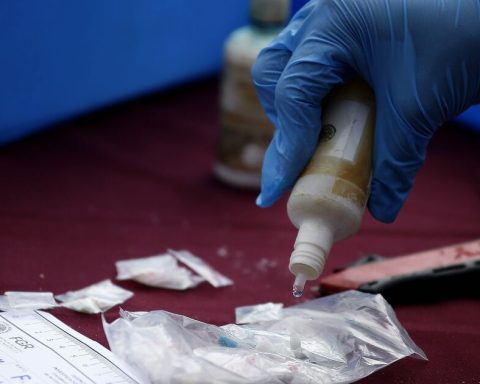In 1882, the German doctor Friederich Trendelemburg managed to successfully carry out the first removal of a pancreatic tumor. But it was not until 1940 that the American Allen Whipple managed to perform a pancreatoduodenectomy in a single stage for the first time. It is a very complex surgery that consists of removing, along with the tumor, the portion of the stomach, intestine and other nearby organs invaded by tumor cells, reconnecting the digestive system. This surgery is also known as the Whipple procedure, in his honor, and has been a milestone in the treatment of pancreatic cancer.
Currently, removal of the tumor remains the gold standard and the most effective treatment, as long as the tumor is not at a very advanced stage and surgery does not pose a risk.
The problem is that only 20% of tumors are diagnosed in early stages. If the tumor can no longer be removed (in more advanced stages), palliative surgery may be performed to relieve symptoms or prevent complications such as bowel obstruction. But in this case it is necessary to resort to other therapeutic alternatives, such as chemotherapy or radiotherapy, to try to reduce the size and progress of the tumor. Chemotherapy and radiation therapy can also be used before and after surgery on tumors that can be removed.
The main problem with pancreatic cancer is that the efficacy of these treatments is very limited and the 5-year survival rate does not exceed 10%. Therefore, pancreatic cancer continues to be one of the most lethal today, mainly affecting developed countries. In Europe and the USA it means the third cause of death by cancer and worldwide it ranks seventh.
New therapies are urgently needed to convert this highly aggressive tumor into a “pharmacologically accessible” tumor. The good news is that these therapies could arrive in the next few years thanks to the numerous investigations that are currently being carried out.
The pancreas and pancreatic ductal adenocarcinoma
The pancreas is made up of two types of cells. Endocrine cells, which secrete hormones into the bloodstream such as insulin or glucagon, essential for the metabolism of carbohydrates (sugars).
And the exocrine cells, which secrete digestive enzymes, which help digestion, and the pancreatic juice that contains salts, such as bicarbonate, which neutralize the acid coming from the stomach. These compounds are secreted in the pancreatic duct and from there they pass into the intestine. We can see it illustrated in the following video.
Approximately 90% of pancreatic tumors affect exocrine cells. The vast majority are located in the cells that secrete pancreatic juice. This gives rise to a pancreatic ductal adenocarcinoma (PDCA), the most frequent and aggressive tumor and the one we will talk about here.
Acinar cell carcinoma is another exocrine tumor that affects the cells that produce enzymes, or acinar cells, but it accounts for a very small percentage of exocrine pancreatic tumors. On the other hand, endocrine cell tumors usually have a better prognosis and are much easier to treat. An example is the pancreatic neuroendocrine tumor, which affects the cells where hormones are produced.
There are certain factors that confer risk of pancreatic cancer, such as smoking, obesity, diabetes, chronic pancreatitis, genetic predisposition, family history of pancreatic cancer or high alcohol consumption.
In addition, the risk of ACPD increases with age and is higher in men than in women.
Difficulties in treating this type of cancer
There are three main reasons why ACDP is such an aggressive cancer. The first is its difficulty in diagnosing it in early stages. The second, the rapid progression of the tumor and metastasis. The third, resistance to chemotherapy.
It is common for this cancer to be found in advanced stages due to the lack of symptoms or the appearance of non-specific symptoms at the beginning of the disease that can be confused with other pathologies. The usual symptoms are nausea, changes in bowel habits, abdominal or back pain, unexplained weight loss, jaundice.
When it is in a very advanced stage and the tumor cannot be removed, chemotherapy becomes the therapeutic alternative. But ACDP has developed complex molecular mechanisms that allow it to acquire resistance to chemotherapy drugs and evade the immune system, which plays a very important role in the recognition of tumor cells and their elimination.
Although the tumor process is initiated by mutations in a small group of genes, tumor cells also suffer from a series of epigenetic changes and the activation of various cell signaling pathways that make them able to proliferate, acquire drug resistance and maintain an immunosuppressive environment.
In addition, they also develop a very dense tissue that surrounds and supports the cells (stroma), which makes it difficult for drugs to reach the tumor, and favors dissemination to nearby tissues, organs and lymph nodes (early metastasis).
For these reasons, although conventional treatments are capable of producing a modest increase in patient survival, they do not achieve long-term survival, much less complete cure.
What’s new for this old foe?
There are new therapies aimed at interfering with the tumor’s own molecular mechanisms. These are already being used in patients and we can find several different.
An example of these therapies is a treatment that inhibits proteins involved in DNA repair. These proteins repair “breaks” in DNA, and when those breaks are not repaired because the proteins are inhibited, the tumor cells die.
Another example is checkpoint inhibitors. Tumor cells express a protein on their surface that acts as a “brake” for T lymphocytes when they try to attack them. In this way, tumor cells manage to evade the immune system.
To inhibit these protective proteins that act as “checkpoints”, antibodies are used that bind to them and prevent tumor cells from joining.
In this way, T lymphocytes can be activated and develop an immune response against the tumor (antibodies and cytotoxic T lymphocytes). This type of therapy aimed at activating the immune system to kill tumor cells is called immunotherapy.
These drugs only benefit a very small percentage of patients and in many cases the benefit is still very limited. but they exist numerous investigations to develop other therapeutic approaches that seek to “disarm” tumor cells by attacking other molecular mechanisms that make them so resistant.
These therapeutic strategies are aimed at inhibiting activation pathways involved in resistance and proliferation; interfere with metabolism; modify the tumor microenvironment; and immunotherapy (vaccines, CART cells, etc.).
All these advances in therapy, together with the future development of methods that allow earlier diagnosis of the tumor, could include pancreatic cancer in the list of curable tumors in the coming years.
Rosana Simon Vazquez, PhD in Biochemistry and Molecular Biology. Researcher in Nanomedicine and Immunology, University of Vigo
This article was originally published on The Conversation. read the original.
















